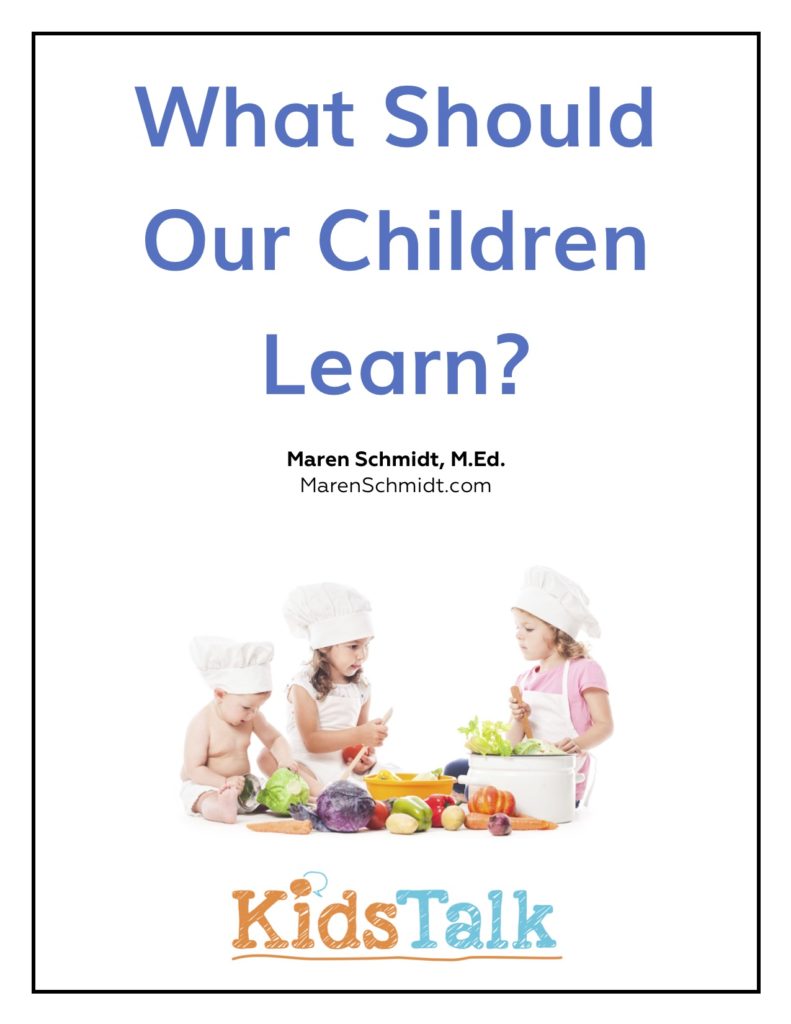
Our children’s world is changing at a pace that is difficult to comprehend.
The jobs that are here today probably won’t exist in ten, much less twenty years.
We need to teach and help our children learn a skill set that will enable them to navigate the fast-moving changes they will inevitably encounter during their lives.
A situation we are seeing with twenty-somethings has been named “a failure to launch.”
The shift in our economy’s infrastructure has limited the number of job opportunities for those entering or trying to re-enter the workforce. For many it feels safer to play video games in their parents’ basements than to make a conscious effort to create a different opportunity for their futures.
In my observations, people who have had the opportunity since early childhood to make important choices in their daily routines seem to have the resourcefulness to choose to do something different.
Yes, the world is not what they were told it would be, but these young adults who are comfortable with making choices have the ability to respond to new circumstances. Their years of practice with making choices is a habit.
Learning to make choices and living with the consequences of those choices also creates a sense of commitment within an individual. Those young adults without years of practice lack the creativity to see things differently, and are paralyzed by their inability to see or make a choice to step out of the expected.
How do we help our children to learn to make choices?
We can start with the one-year old by laying out two sets of clothes and asking, “Which outfit would you like to wear now?” For our two-or three-year-old who has dressed himself with a plaid shirt, striped pants, argyle socks, and a polka-dotted stocking cap, we acknowledge and appreciate his efforts by saying, “I see you got dressed all by yourself.”
On shopping trips we can ask, “Which would you prefer this week for dinner, broccoli or green beans?”
At bedtime, perhaps we offer simple choices such as, “Would you like to brush your teeth before or after your bath?”
Whenever we can let our children make a choice, we do.
We need to bring a deep respect for the child’s work in learning how to learn to live, day-by-day, choice-by-choice.
With years of experience our thirteen-year old will choose the right friends; our seventeen-year-old will confidently choose a college; our college-graduate will build a career.
We also need to understand that sometimes for the novice, choice is about satisfying curiosity. We can’t truly choose what we don’t know. How can we choose between cherry or coconut pie unless we know how each one tastes?
To help our children know we need to offer our children bits of knowledge and experience in order for them to make choices they can live with.
- Using the correct name for objects is one help. It’s not a thinga-ma-jiggy. It’s a phillips head screwdriver.
- We offer tastes and smells of new foods. This is a bell pepper. This is a carrot. This is cinnamon. This is ginger.
- The names and the experience with items that have sensorial qualities of texture, sound, movement, shape and much more can be introduced to our children three or four items at a time.
- We can give short demonstrations on how to do tasks, such as how to turn a page, to carry a breakable item, or to wash a glass.
Being able to choose with confidence requires that we have the experience and knowledge to not only know how to choose, but to know what we are choosing.
We help children learn to make choices by respecting their need to learn to make choices and live with those choices. Being confident in their ability to choose well allows our children to live their lives creatively, to develop self-discipline, and to work cooperatively with others, because they respect others’ right to choose.
Remember, the child is always asking us to “help me help myself” if we will only stop to listen. Allowing choice is a good place to begin our help.
Sign up below for your free guide, What Should Our Children Learn?


One Response to “Learning to Make Choices”